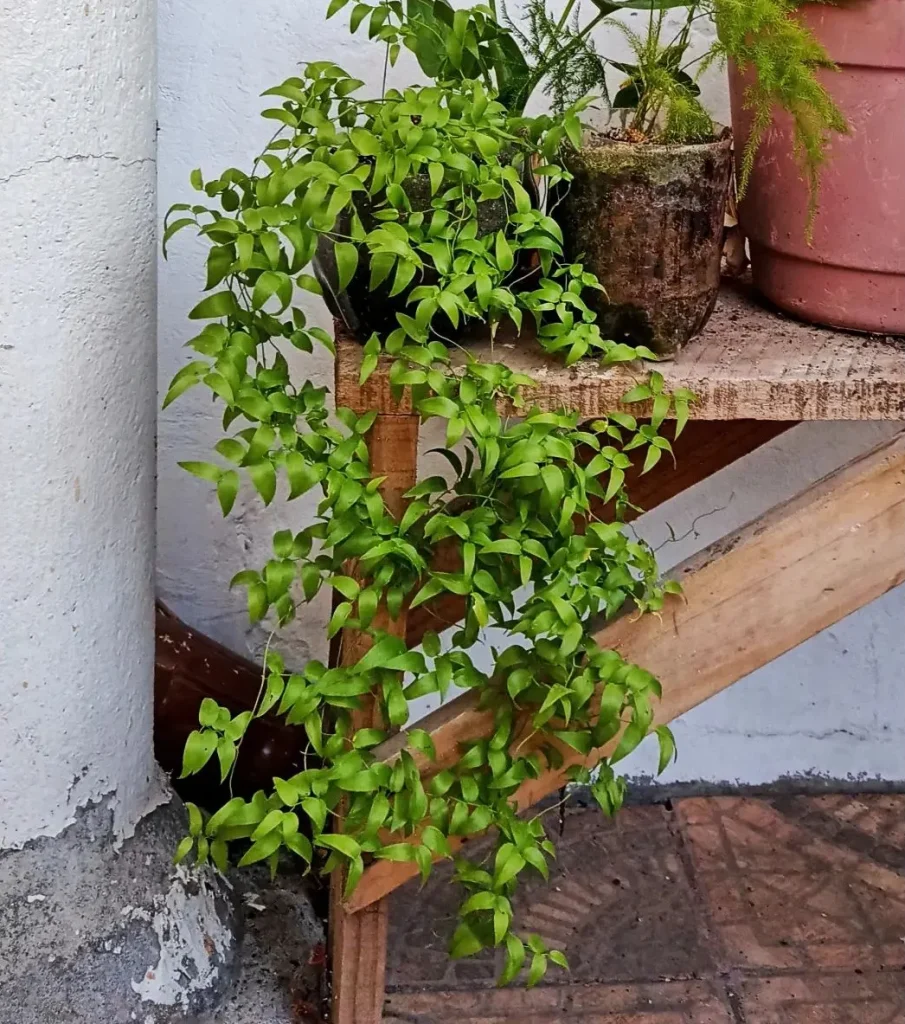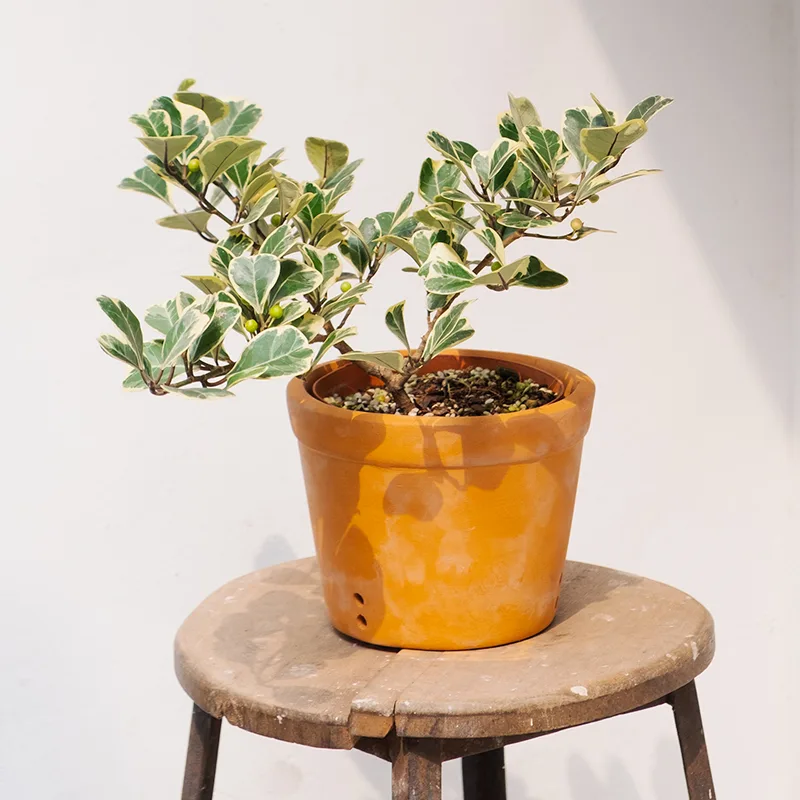The world of houseplants is a vibrant tapestry, and among its most dazzling threads is the Begonia Rex ‘Zurich’. Known for its spectacular, almost otherworldly foliage, this plant is a true living work of art, transforming any space into a gallery of natural beauty. Far from being just another green companion, the ‘Zurich’ cultivar stands out with its intricate patterns, dramatic colors, and fascinating textures, captivating anyone who beholds its unique charm.
In this comprehensive guide, we’ll delve deep into the heart of Begonia Rex ‘Zurich’ care, exploring everything from its ideal growing conditions to the subtle nuances that unlock its full potential. We’ll also embark on a personal “time-lapse” journey, chronicling the growth of a ‘Zurich’ through the eyes of a devoted gardener, sharing the triumphs and lessons learned along the way. Whether you’re a seasoned plant enthusiast or a curious beginner, prepare to be enchanted by the regal beauty of this magnificent begonia.
The Enigmatic Allure of Begonia Rex ‘Zurich’
The ‘Begonia Rex Cultorum’ group, to which ‘Zurich’ belongs, is a collection of hybrid begonias primarily celebrated for their extraordinary leaves rather than their modest flowers. These rhizomatous begonias originate from the tropical and subtropical regions, particularly India, where the species Begonia rex was first discovered. Through extensive hybridization, countless cultivars have emerged, each vying for attention with its unique foliar display.
Begonia Rex ‘Zurich’ is a shining example within this group. It boasts large, textured leaves that are a symphony of silver, deep green, and rich burgundy. The patterns are often intricate, with metallic sheens and contrasting veins that seem to shimmer under the right light. The leaves can be subtly ruffled or deeply lobed, adding to their dramatic appeal. This cultivar’s striking appearance makes it an instant focal point in any indoor garden, a living sculpture that constantly evolves with new growth.
Unlike many flowering plants, the beauty of ‘Zurich’ lies almost entirely in its magnificent foliage. While it does produce small, often pale pink or white flowers, these are typically overshadowed by the leaves and are often pinched off by growers to encourage the plant to put more energy into its stunning decorative leaves.
Nurturing Your ‘Zurich’: Essential Care Guidelines
Caring for Begonia Rex ‘Zurich’ is a rewarding endeavor that requires attention to detail and an understanding of its native tropical environment. Providing the right conditions will ensure your plant thrives and displays its most vibrant colors.
Light: The Artist’s Canvas
Begonia Rex ‘Zurich’ absolutely adores bright, indirect light. Imagine its natural habitat as the forest understory, where sunlight filters through a canopy of taller trees. This means direct, harsh sunlight, especially the intense midday sun, is a definite no-go. Direct sun can quickly scorch its delicate, thin leaves, leaving unsightly brown spots or crispy edges, effectively bleaching their vibrant colors.
Ideally, place your ‘Zurich’ near an east-facing window where it can receive gentle morning sun, or a north-facing window for consistent, diffused light throughout the day. If a south or west-facing window is your only option, ensure the plant is set back a few feet from the window or shielded by a sheer curtain to diffuse the intensity.
Signs of improper light:
- Too much light: Scorched, bleached, or faded leaves.
- Too little light: Leggy growth (stretched stems with sparse leaves), smaller leaves, or muted, dull colors. If the vibrant hues of your ‘Zurich’ start to dim, it’s often a cry for more light, but remember, always indirect!
Temperature: A Tropical Embrace
These tropical beauties thrive in consistent, warm temperatures. The ideal range for Begonia Rex ‘Zurich’ is between 65-75°F (18-24°C). They are quite sensitive to cold, so avoid placing them near drafty windows, air conditioning vents, or heating units that can cause sudden temperature fluctuations. Even a brief exposure to temperatures below 50°F (10°C) can cause significant stress, leading to leaf drop or stunted growth. If you’re comfortable in your home, chances are your ‘Zurich’ will be too.
Humidity: The Breath of Life
Humidity is perhaps one of the most crucial elements for the health and vibrancy of your Begonia Rex ‘Zurich’. Coming from humid jungle environments, they truly flourish when the ambient humidity is 50% or higher. Low humidity is a common culprit for crispy leaf edges, curling leaves, and overall dullness.
There are several effective ways to boost humidity around your plant:
- Pebble Trays: Place the pot on a saucer filled with pebbles and water, ensuring the bottom of the pot doesn’t sit directly in the water. As the water evaporates, it creates a humid microclimate around the plant.
- Humidifier: For drier homes, a dedicated room humidifier is an excellent investment, benefiting not just your begonia but other tropical plants and even your own comfort.
- Grouping Plants: Plants naturally release moisture through transpiration. Grouping your ‘Zurich’ with other humidity-loving plants can help create a small, localized humid environment.
- Misting (Use with Caution): While some growers mist their begonias, it’s generally advised to do so carefully. While it provides a temporary humidity boost, water sitting on the velvety or textured leaves can lead to fungal issues like powdery mildew, especially if air circulation is poor. If you do mist, ensure good air movement and mist early in the day so leaves dry quickly.
Watering: The Delicate Balance
Begonia Rex ‘Zurich’ prefers consistently moist, but never soggy, soil. This is a critical distinction to master, as both overwatering and underwatering can lead to significant problems.
How to water:
- Check the Soil: The golden rule is to allow the top inch or two of the soil to dry out before watering again. Stick your finger into the soil; if it feels dry, it’s time to water.
- Water Thoroughly: When you water, do so thoroughly until excess water drains out of the pot’s drainage holes. This ensures the entire root ball receives moisture.
- Drainage is Key: Never let your ‘Zurich’ sit in standing water. Always empty any excess water from the saucer within 15-30 minutes of watering to prevent root rot.
Signs of watering issues:
- Overwatering: Yellowing leaves, mushy stems, wilting despite wet soil, and ultimately, root rot (dark, soft, foul-smelling roots).
- Underwatering: Drooping, limp leaves that may feel dry and crispy. The plant might look generally parched. While they can recover from minor underwatering, prolonged drought is detrimental.
Soil: The Foundation of Growth
The right potting mix is crucial for Begonia Rex ‘Zurich’ due to its fine, shallow root system. It needs a lightweight, well-aerated, and fast-draining soil that also retains some moisture.
An ideal potting mix might consist of:
- 2 parts good quality peat-based potting mix (or coco coir as a sustainable alternative)
- 1 part perlite (for aeration and drainage)
- 1 part vermiculite or coarse sand (for moisture retention and improved drainage)
The key is to avoid heavy, dense soils that can become waterlogged and suffocate the roots. Always use a pot with adequate drainage holes.
Fertilization: Fueling the Foliage
During its active growing season (spring and summer), your Begonia Rex ‘Zurich’ will benefit from regular feeding. Use a balanced, water-soluble liquid fertilizer (e.g., 10-10-10 or a formulation slightly higher in nitrogen for foliage growth), diluted to half or quarter strength. Fertilize every 2-4 weeks.
During autumn and winter, when the plant’s growth naturally slows down, reduce or completely stop fertilization. Over-fertilizing can lead to nutrient burn, causing crispy leaf edges and potential damage to the root system.
Potting & Repotting: Room to Flourish
Begonia Rex ‘Zurich’, being a rhizomatous type, typically prefers shallow, wide pots that allow its rhizomes to spread horizontally. Ensure the pot has excellent drainage holes.
Repotting frequency:
- Young plants: Annually in spring to encourage robust growth and provide fresh nutrients.
- Mature plants: Every 2-3 years, or when you notice signs that the plant has become rootbound (roots growing out of drainage holes, water running straight through the pot, or stunted growth despite good care).
Repotting process:
- Water the plant thoroughly a day before repotting to reduce stress.
- Gently remove the plant from its current pot.
- Inspect the roots. Trim away any dark, mushy, or circling roots with sterilized scissors.
- Add a layer of fresh potting mix to the new, slightly larger pot.
- Center the plant and backfill with more fresh soil, ensuring the rhizomes are just at or slightly above the soil surface.
- Water thoroughly after repotting and place the plant in a slightly shaded area for a few days to help it recover from transplant shock.
Pruning & Maintenance: Shaping Beauty
Pruning Begonia Rex ‘Zurich’ is primarily for aesthetic reasons, to encourage bushier growth, and for plant health.
- Remove Dead or Yellowing Leaves: Regularly inspect your plant and trim off any leaves that are discolored, damaged, or spent. This directs the plant’s energy towards healthy new growth and improves air circulation.
- Pinching: To encourage a more compact and bushy form, you can pinch back the tips of stems. This stimulates branching and a fuller appearance.
- Dusting: Gently wipe the leaves with a soft, damp cloth occasionally to remove dust, which can impede photosynthesis and dull their vibrant colors.
A Gardener’s Time-Lapse Memoir: My Begonia Rex ‘Zurich’ Journey
My journey with Begonia Rex ‘Zurich’ began not with a seed, but with a small, unassuming plant I picked up from a local nursery. Its leaves, though small, already hinted at the stunning patterns I had seen online. I named her ‘Aurora’ for the dawn-like colors on her nascent foliage.
Month 1-3: The Humble Beginning – Aurora’s First Glimmer
When Aurora first arrived, she was a compact little thing, perhaps six inches tall with four or five fully formed leaves. My first task was to find her the perfect spot. I settled on a shelf near an east-facing window, ensuring she’d get soft morning light, filtered through a sheer curtain for extra protection. I used a well-draining aroid mix, as I’d read it was suitable for rhizomatous begonias, and potted her in a wide, shallow terracotta pot, which I knew would help with evaporation and prevent sogginess.
I quickly learned the delicate balance of watering. The soil needed to feel lightly moist, not soaking. I’d gently lift the pot to gauge its weight, and when it felt light, I’d water thoroughly until water drained from the bottom, always emptying the saucer. For humidity, I placed her on a pebble tray, diligently refilling it daily. Within a few weeks, a tiny, rolled-up leaf began to unfurl from the center, a vibrant, promising sign. The initial excitement of that first new leaf, with its nascent silver and burgundy, was akin to watching a tiny painting slowly reveal itself.
Month 4-9: Rapid Expansion – A Burst of Color
As spring transitioned into summer, Aurora truly began to flourish. Her growth was far more vigorous than I’d anticipated. New leaves emerged consistently, each larger and more strikingly colored than the last. The deep greens became richer, the silver sections more pronounced, and the burgundy splashed across the leaves with increasing intensity. It was during this period that her true ‘Zurich’ identity became undeniable.
I established a routine: watering every 4-5 days, depending on how quickly the soil dried, and fertilizing every three weeks with a diluted balanced liquid feed. There was one minor scare around month six: some leaf edges started to turn slightly crispy. My immediate thought was underwatering, but the soil was moist. A quick check of the humidity gauge confirmed my suspicion – it had dropped due to a heatwave. I promptly brought out my small humidifier, placing it near Aurora, and within days, the crispiness halted, and new leaves developed perfectly. This taught me the immediate importance of consistent humidity for these plants.
Month 10-18: Maturing Splendor – The Regal Display
By her first anniversary, Aurora had transformed into a magnificent specimen, easily a foot tall and nearly two feet wide. Her foliage was dense and lush, a riot of texture and color. I decided it was time for her first repotting. I chose a slightly larger, even wider pot, carefully lifting her out. Her root system, though shallow, was healthy and spreading horizontally, confirming the need for more space. After the repotting, she sulked for a few days, her leaves looking a bit limp, but a good drink and a stable environment quickly revived her.
Around this time, she even produced a few delicate, pale pink flowers on slender stalks. While pretty, they were indeed small and easily overlooked amidst the grandeur of her leaves. I let them bloom for a while, but eventually, I pinched them off, wanting all her energy to go into maintaining that glorious foliage. I also started a light pruning regimen, snipping off any older leaves that started to fade or looked less perfect, which seemed to encourage even bushier new growth from the rhizomes.
I also had a run-in with a few mealybugs during this period, tiny white fuzzy spots hiding in the leaf axils. My solution was swift: a cotton swab dipped in rubbing alcohol directly applied to each bug. Regular inspection became part of my routine, ensuring I caught any potential infestations early.
Year 2-3 & Beyond: Sustaining the Legacy – Aurora’s Enduring Beauty
Now, into her third year, Aurora continues to be a star. She’s a robust plant, demanding less minute-by-minute attention but still rewarding consistent care. I’ve learned to anticipate her needs, especially as the seasons change. During the cooler, darker winter months, her growth naturally slows. I reduce watering significantly and halt fertilization completely, allowing her a period of dormancy, though she doesn’t lose all her leaves like some begonias.
The most exciting development has been propagation. From a single healthy leaf, I’ve successfully propagated several “Aurora babies,” each carrying the same stunning genetic blueprint. It’s an incredibly satisfying process to see a new plant emerge from just a piece of a leaf. I’ve shared these new plants with friends, extending Aurora’s lineage and spreading the joy of ‘Zurich’ begonias.
Aurora has taught me patience, observation, and the immense satisfaction that comes from tending to something so inherently beautiful. She is more than just a houseplant; she is a testament to nature’s artistry and a constant source of wonder in my home.
Overcoming Obstacles: Common Problems & Solutions
Even with the best intentions, your Begonia Rex ‘Zurich’ might face some common challenges. Knowing what to look for and how to respond can save your plant.
Leaf Issues
- Browning/Crispy Edges: This is almost always a sign of low humidity or underwatering. Increase ambient humidity immediately using pebble trays or a humidifier. Check soil moisture and adjust watering frequency. Can also be a symptom of too much direct light.
- Yellowing Leaves: Often points to overwatering and potential root rot. Ensure proper drainage and allow the soil to dry sufficiently between waterings. It can also indicate nutrient deficiencies (especially nitrogen) or pest infestation.
- Curling Leaves: Usually a reaction to too much light or heat. Move the plant to a shadier spot or away from heat sources.
- Leaf Drop: A drastic symptom, often caused by sudden environmental changes (temperature fluctuations, drafts, moving the plant), severe underwatering or overwatering, or prolonged stress. Try to stabilize the environment and review your care routine.
Pests
Begonia Rex ‘Zurich’ can be susceptible to common houseplant pests. Regular inspection, especially of the undersides of leaves, is your best defense.
- Mealybugs: Small, white, cottony masses found in leaf axils or on stems. They suck plant sap, leading to stunted growth.
- Solution: Dab them directly with a cotton swab dipped in rubbing alcohol. For larger infestations, use insecticidal soap or neem oil.
- Spider Mites: Tiny arachnids that cause fine webbing, usually on the undersides of leaves, and tiny yellow or brown stippling.
- Solution: Increase humidity. Rinse the plant with strong jets of water. Apply insecticidal soap or neem oil repeatedly.
- Aphids: Small, pear-shaped insects, often green, black, or brown, clustered on new growth or undersides of leaves. They excrete sticky honeydew.
- Solution: Rinse off with water. Use insecticidal soap or neem oil.
Diseases
- Root Rot: The most common and often fatal disease, caused by persistent overwatering and poor drainage.
- Prevention: Use well-draining soil and a pot with drainage holes. Allow the top soil to dry between waterings.
- Treatment: If caught early, gently remove the plant, trim off any dark, mushy roots with sterilized scissors, and repot into fresh, dry, well-draining soil. Discard the old, potentially contaminated soil.
- Powdery Mildew: Appears as white, powdery patches on leaves, often on the upper surface. Thrives in high humidity with poor air circulation, or when leaves stay wet for too long.
- Prevention: Ensure good air circulation around the plant. Avoid misting if leaves stay wet.
- Treatment: Remove affected leaves immediately. Improve air circulation. You can try a fungicide spray specifically for powdery mildew, or a homemade solution of baking soda (1 teaspoon) mixed with a few drops of liquid soap in a quart of water.
Propagation: Sharing the ‘Zurich’ Magic
One of the most exciting aspects of growing Begonia Rex ‘Zurich’ is its ease of propagation, allowing you to multiply your collection or share these stunning plants with others. They are known for their ability to regenerate from a single leaf, a fascinating botanical trick.
Leaf Cuttings (The Art of Regeneration)
This is the most popular and successful method for propagating Rex Begonias.
- Select a Healthy Leaf: Choose a mature, healthy leaf that is free of any blemishes or signs of stress.
- Prepare the Leaf: You have a few options:
- Whole Leaf with Petiole: Cut the leaf with about an inch of its petiole (leaf stem) still attached. Insert the petiole into the rooting medium.
- Leaf Wedges: This method often yields multiple new plants from one leaf. Cut the leaf into several wedge-shaped sections, ensuring each wedge contains at least one prominent vein. A “V” cut is often recommended, with the point of the V facing down.
- Slits on Underside: Lay a whole leaf flat on the rooting medium and make small cuts (slits) across the main veins on the underside of the leaf. Pin the leaf down to ensure good contact with the medium.
- Rooting Medium: Use a light, sterile, well-draining medium like a mix of peat and perlite, or pure vermiculite. Moisten it thoroughly before planting.
- Planting:
- For whole leaves with petioles: Insert the petiole into the medium.
- For leaf wedges: Insert the cut, pointed end of each wedge into the medium, ensuring the vein is partially buried.
- For the slit method: Simply lay the leaf on the surface after making the cuts.
- Create a Humidity Chamber: This step is crucial for success. Cover the pot with a clear plastic bag or dome to create a mini-greenhouse, maintaining high humidity. Ensure the plastic doesn’t touch the leaf surface too much to prevent rot.
- Light and Temperature: Place the covered pot in a warm spot with bright, indirect light (70-75°F / 21-24°C is ideal).
- Patience is Key: Roots should begin to form in 3-4 weeks, followed by tiny new plantlets emerging from the base of the petiole or from the cut veins in 6-8 weeks. Once the plantlets are a decent size and have their own small root systems, you can gently separate them and pot them individually.
Rhizome Division (Expanding Your Collection)
If your Begonia Rex ‘Zurich’ has a substantial, spreading rhizome, you can divide it during repotting.
- Gently remove the plant from its pot.
- Carefully separate a section of the rhizome that has at least one growing point (a leaf or bud) and some healthy roots.
- Pot each divided section into its own container with fresh, well-draining potting mix.
- Keep the newly potted divisions consistently moist (not soggy) and out of direct sunlight for a few weeks to help them establish.
Stem Cuttings (A Less Common Path)
While less common for Rex Begonias due to their rhizomatous nature, stem cuttings can sometimes be successful, especially from canes that emerge from the rhizome. Take a cutting with a few leaves, remove the lower leaves, dip in rooting hormone (optional but helpful), and plant in a moist rooting medium, covering with a humidity dome.
Conclusion
The Begonia Rex ‘Zurich’ is more than just a houseplant; it is a captivating living sculpture that brings a touch of exotic drama and unparalleled beauty to any indoor space. Its intricate patterns, metallic sheen, and vibrant interplay of silver, green, and burgundy make it a constant source of fascination.
While it demands specific conditions—bright, indirect light, consistent warmth, high humidity, and a careful hand with the watering can—the rewards of nurturing this plant are immeasurable. From the humble beginning of a single sprout to its full, majestic display, the journey with a Begonia Rex ‘Zurich’ is a time-lapse of evolving beauty, resilience, and growth. By understanding and meeting its needs, you invite a piece of living art into your home, a vibrant testament to nature’s boundless creativity. Embrace the challenge, enjoy the process, and let your ‘Zurich’ transform your living space with its enduring splendor.
If i die, water my plants!



